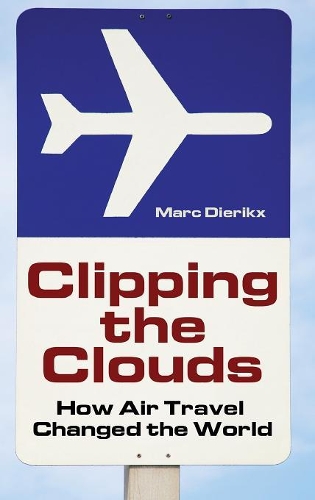
Clipping the Clouds: How Air Travel Changed the World
(Hardback)
Available Formats
Publishing Details
Clipping the Clouds: How Air Travel Changed the World
By (Author) Marc Dierikx
Bloomsbury Publishing PLC
Praeger Publishers Inc
30th June 2008
United States
Classifications
General
Non Fiction
History: specific events and topics
387.7
Physical Properties
Hardback
216
Width 156mm, Height 235mm
482g
Description
Mixing in elements of pop culture, Dierikx provides a chronological history of the evolution of air travel. He covers the significant challenges and developments in air transportation for a specific period, starting with how and why aviation came to play an important role in international politics and economic relations. He follows with an examination of how improvements in technology influenced existing concepts of distance, created new travel patterns, and what effect the growth in numbers of passenger and cargo had on air transportation. Finally, Dierikx looks at how airlines have become increasingly detached from national interests and state control, concluding with an overview of the current state of air travel, and a description of the role air transportation played in the creation of a global society. At the beginning of the twenty-first century, it is difficult to imagine our world without aircraft. Airplanes are everywhere, and rapid air transport has become one of the necessities of our time. Yet one of the peculiarities of powered flight is that it has stayed in the public focus for over a century. Clipping the Clouds looks at the history of aviation in a challenging new way, covering not just the technology, but the way aviation has interacted with society since its very beginnings. Mixing in pop cultureeach chapter opens and closes with an excerpt from a movie that depicts elements of air transport illustrating the chapter's themeDierikx provides a chronological history of the evolution of air travel since 1919. He covers the significant challenges and developments in air transportation for each of four chronological periods, starting with how and why aviation came to play an important role in international politics and economic relations. He follows with an examination of how improvements in technology influenced existing concepts of distance, created new travel patterns, and what effect the growth in numbers of passenger and cargo had on air transportation. Finally, Dierikx looks at how airlines have become increasingly detached from national interests and state control, concluding with an overview of the current state of air travel and a description of the role air transportation has played in the creation of a global society.
Reviews
The author correctly shows how the entwining of technology and public acceptance of the development of range and economy in airlines, together with the lowering of fairs by the introduction of coach/economy class in the late 1950s, followed by the development of intercontinental jets, led to a tremenduos jump in passengers carried. There is no comparable work, for boths its narration and bibliography. Highly recommended. All leves/libraries. * Choice *
Clipping the Clouds fills a gap on aviation travel for business or college libraries, because few books have been written on the topic during the last decade. * Army History *
World historians, in particular, would do well to read this book. * The Historian *
Author Bio
MARC DIERIKX is Program Director of Development Cooperation Studies at the Institute of Netherlands History, Netherlands Organization for Scientific Research, The Hague, Netherlands. He has written numerous books and articles on air travel, airlines, and airports, including: Fokker: A Transatlantic Biography, and An Image of Freedom: The Netherlands and the United States, 1945 to the Present.
